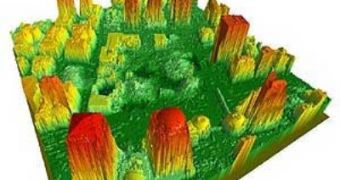Seeing is not all about light, as sounds often produce accurate images of what light alone can't show us. Many applications use sound as imaging technique, like radars, sonars, echographs and telecommunication devices.
Processing acoustic signals has just become more efficient with a new imaging algorithm that will transform the way we see things. University of Virginia Engineering School Associate Professor William F. Walker and Research Associate Francesco Viola, together with graduate student Michael A. Ellis, have created a new method of seeing with sound.
It is called the Time-domain Optimized Near-field Estimator (TONE) and can greatly enhance the effectiveness of medical ultrasound imaging devices, thus helping doctors see what's going on inside the human body with improved resolution and contrast.
Ultrasound scanners use ultrasounds to see internal organs and muscles, in search of abnormalities in their structure. Pregnancy evolution is observed with ultrasounds and has become the most widely recognized by the public.
However, this technique is not one hundred percent reliable, as computer algorithms produce often unclear images of how sound waves reflect off various surfaces and textures. Well defined images are crucial for analyzing possible mutations and diseases, so the new algorithm is producing the clearest images ever.
"For almost four decades, beamforming algorithms have been refined for RADAR and SONAR," said Walker. "While these algorithms are tremendously powerful, they don't generally translate well to medical ultrasound imaging."
TONE solves many of these problems and allows clinical specialists to get a better view of organs and tissues as the experiments already proved, by producing more focused images instead of the blurry, undefined images usually obtained with current algorithms.
"Off-axis signals - reflections coming from undesired locations - degrade images produced by current ultrasound systems" said Viola. "TONE reduces the contribution of these unwanted signals, thereby forming images with greatly increased contrast and resolution."
"The potential applications for this algorithm are almost infinite," said James H. Aylor, dean of University of Virginia's School of Engineering and Applied Science. "Not only can it be used in the medical community to benefit patients nationwide, but it will also have applications in the fields of radio astronomy, seismology and more."

 14 DAY TRIAL //
14 DAY TRIAL //